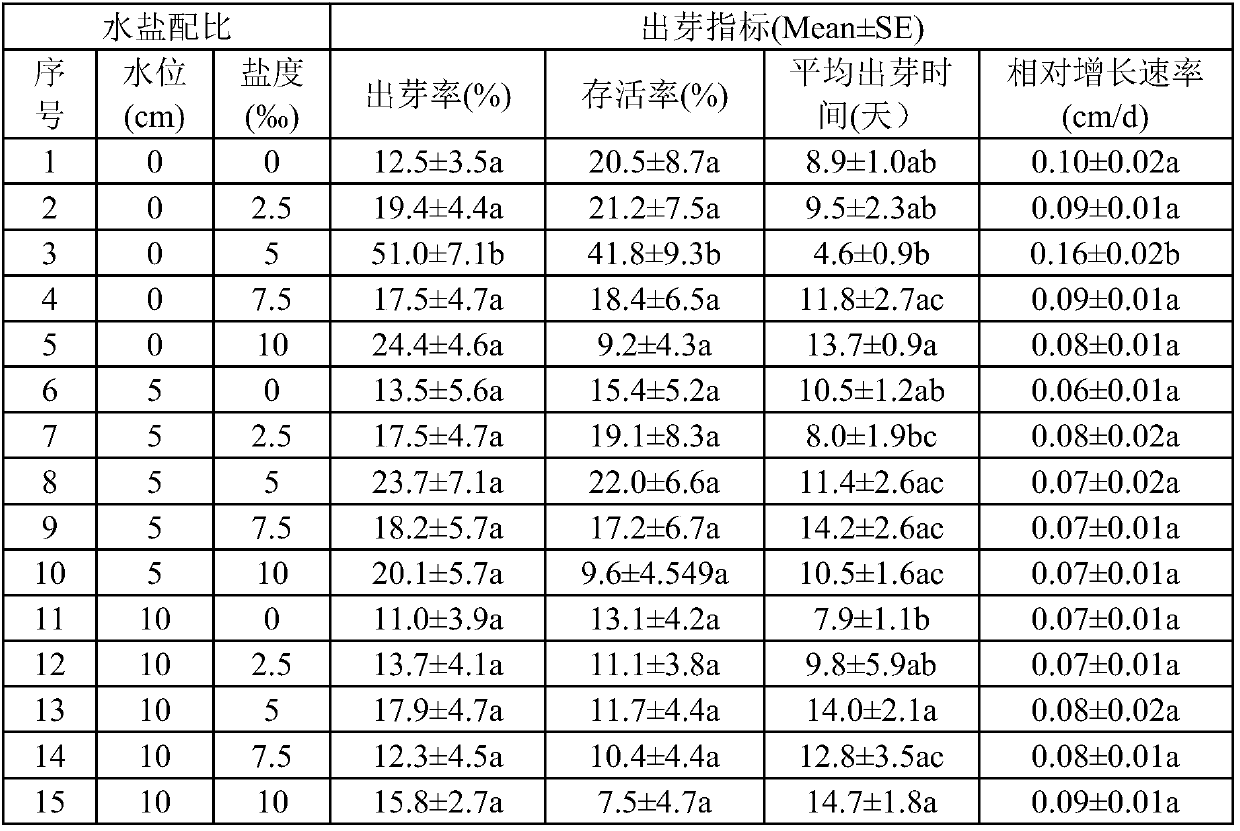Cultivation method of reed rootstock budding with optimal water and salt threshold value
A cultivation method and rhizome technology are applied in the field of optimal water and salt threshold cultivation for rhizome budding of reeds, which can solve the problems that cannot be provided for restoration and reconstruction of degraded salt marshes in the wild, and cannot directly reflect data related to rhizome budding.
- Summary
- Abstract
- Description
- Claims
- Application Information
AI Technical Summary
Problems solved by technology
Method used
Image
Examples
specific Embodiment approach 1
[0012] Specific embodiment one: a kind of reed rhizome budding optimal water and salt threshold value cultivation method of this embodiment is to carry out according to the following steps:
[0013] 1. Collection of reed rhizomes in the wild: During the budding period of plant rhizomes in the middle and late April of each year, sample points with uniform seedling growth in inland or seaside reed swamps are selected, and the rhizomes are excavated through small patches to reach horizontal rhizomes. The best digging depth is 20-30cm. After digging the rhizomes, put them in a black plastic bag, avoid sunlight, and spray water;
[0014] 2. Treatment of reed rhizomes: wash the excavated reed rhizomes, cut off the above-ground parts, keep the underground rhizomes as cultivation materials, select healthy rhizomes with a diameter of 4-7mm, and cut them into 20cm long sections to ensure that each Each segment has at least 2 nodes, and obtains the reed rhizome to be cultivated;
[0015...
specific Embodiment approach 2
[0018] Embodiment 2: This embodiment differs from Embodiment 1 in that: the optimum digging depth described in step 1 is 25 cm. Others are the same as in the first embodiment.
specific Embodiment approach 3
[0019] Embodiment 3: This embodiment differs from Embodiment 1 or Embodiment 2 in that: the aboveground part described in step 2 includes aboveground stems, shoots and leaves. Others are the same as in the first or second embodiment.
PUM
| Property | Measurement | Unit |
|---|---|---|
| Diameter | aaaaa | aaaaa |
| Particle size | aaaaa | aaaaa |
Abstract
Description
Claims
Application Information
 Login to View More
Login to View More - R&D
- Intellectual Property
- Life Sciences
- Materials
- Tech Scout
- Unparalleled Data Quality
- Higher Quality Content
- 60% Fewer Hallucinations
Browse by: Latest US Patents, China's latest patents, Technical Efficacy Thesaurus, Application Domain, Technology Topic, Popular Technical Reports.
© 2025 PatSnap. All rights reserved.Legal|Privacy policy|Modern Slavery Act Transparency Statement|Sitemap|About US| Contact US: help@patsnap.com

